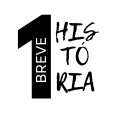How to Create a Facebook Page for Your Small Business: A Comprehensive Guide
4. Optimizing Your Facebook Page
To maximize the effectiveness of your Facebook page for your small business, follow these detailed steps:
4.1. Complete Your Page Information
- Navigate to your Facebook page and click on ‘About’ in the left sidebar.
- Fill in all available fields:
- Overview: Write a concise, engaging summary of your business (255 characters max).
- Description: Provide a more detailed explanation of your products/services and company history.
- Contact information: Include phone number, email, and website.
- Location: Add your physical address if applicable.
- Hours of operation: Set your business hours accurately.
- Add relevant categories for your business (up to 3).
- Include any awards, certifications, or notable achievements.
4.2. Create a Custom Username
- Click ‘Create @Username’ under your page name.
- Choose a username that’s:
- Easy to remember
- Relevant to your business name
- Consistent with your other social media handles
- Check availability and confirm your choice.
4.3. Optimize Visual Elements
- Profile Picture:
- Upload a high-quality image (at least 170×170 pixels).
- Use your logo or a recognizable brand symbol.
- Ensure it looks good in both large and thumbnail sizes.
- Cover Photo:
- Choose an image that represents your brand (at least 820×312 pixels).
- Change it periodically to highlight promotions or seasons.
- Include a call-to-action or your tagline in the image.
- Photo Albums:
- Create albums for different product lines or services.
- Use high-quality images with good lighting.
- Add detailed descriptions to each photo, including relevant keywords.
4.4. Set Up a Call-to-Action (CTA) Button
- Click ‘+ Add a Button’ below your cover photo.
- Choose a CTA that aligns with your business goals:
- “Shop Now” for e-commerce
- “Book Now” for service-based businesses
- “Contact Us” for inquiries
- “Learn More” for information-based pages
- Link the button to the appropriate landing page on your website.
- Test the button to ensure it works correctly.
4.5. Create Engaging Content
- Develop a content calendar:
- Plan posts at least a week in advance.
- Aim for a mix of promotional and value-adding content.
- Include different types of posts: text, images, videos, links.
- Use Facebook’s native tools:
- Create polls to engage your audience.
- Use Facebook Live for real-time interaction.
- Share Stories for more casual, day-to-day content.
- Optimize post timing:
- Use Facebook Insights to determine when your audience is most active.
- Schedule posts for these peak times using Facebook’s scheduling tool.
- Encourage engagement:
- Ask questions in your posts.
- Respond promptly to comments and messages.
- Create posts that invite shares and tags.
4.6. Leverage Facebook Features
- Set up Facebook Shop (if applicable):
- Go to ‘Shop’ in your page settings.
- Follow the prompts to add products, including images and descriptions.
- Link products to your website for purchasing.
- Use Facebook Events:
- Create events for product launches, sales, or webinars.
- Encourage followers to share and invite friends.
- Implement Facebook Offers:
- Create special discounts or promotions exclusive to your Facebook audience.
- Set clear terms and expiration dates.
4.7. Monitor and Analyze Performance
- Regularly check Facebook Insights:
- Review page likes, reach, and engagement metrics.
- Analyze which types of posts perform best.
- Track your audience demographics.
- Set measurable goals:
- Define KPIs like follower growth rate or engagement rate.
- Adjust your strategy based on these metrics.
- Use A/B testing:
- Try different post formats, timings, and content types.
- Compare performance and refine your approach.
4.8. Engage with Your Community
- Respond to all comments and messages promptly:
- Aim to reply within a few hours, if not sooner.
- Use a friendly, professional tone.
- Create a Facebook Group linked to your page:
- Foster discussions among your customers.
- Share exclusive content or offers with group members.
- Collaborate with other businesses or influencers:
- Tag relevant partners in your posts.
- Share or cross-promote content when appropriate.
4.9. Consider Facebook Advertising
- Set up Facebook Pixel on your website:
- This allows you to track conversions and retarget website visitors.
- Start with small, targeted ad campaigns:
- Define your audience based on demographics, interests, and behaviors.
- Set a modest budget to test different ad formats.
- Use Facebook’s ad targeting options:
- Create lookalike audiences based on your current customers.
- Retarget users who have interacted with your page or website.
- Monitor ad performance and adjust accordingly:
- Review metrics like click-through rate and cost per conversion.
- Refine your targeting and ad creative based on results.
By following these detailed steps, you’ll be well on your way to creating an optimized, engaging Facebook page that effectively promotes your small business and connects with your target audience.

